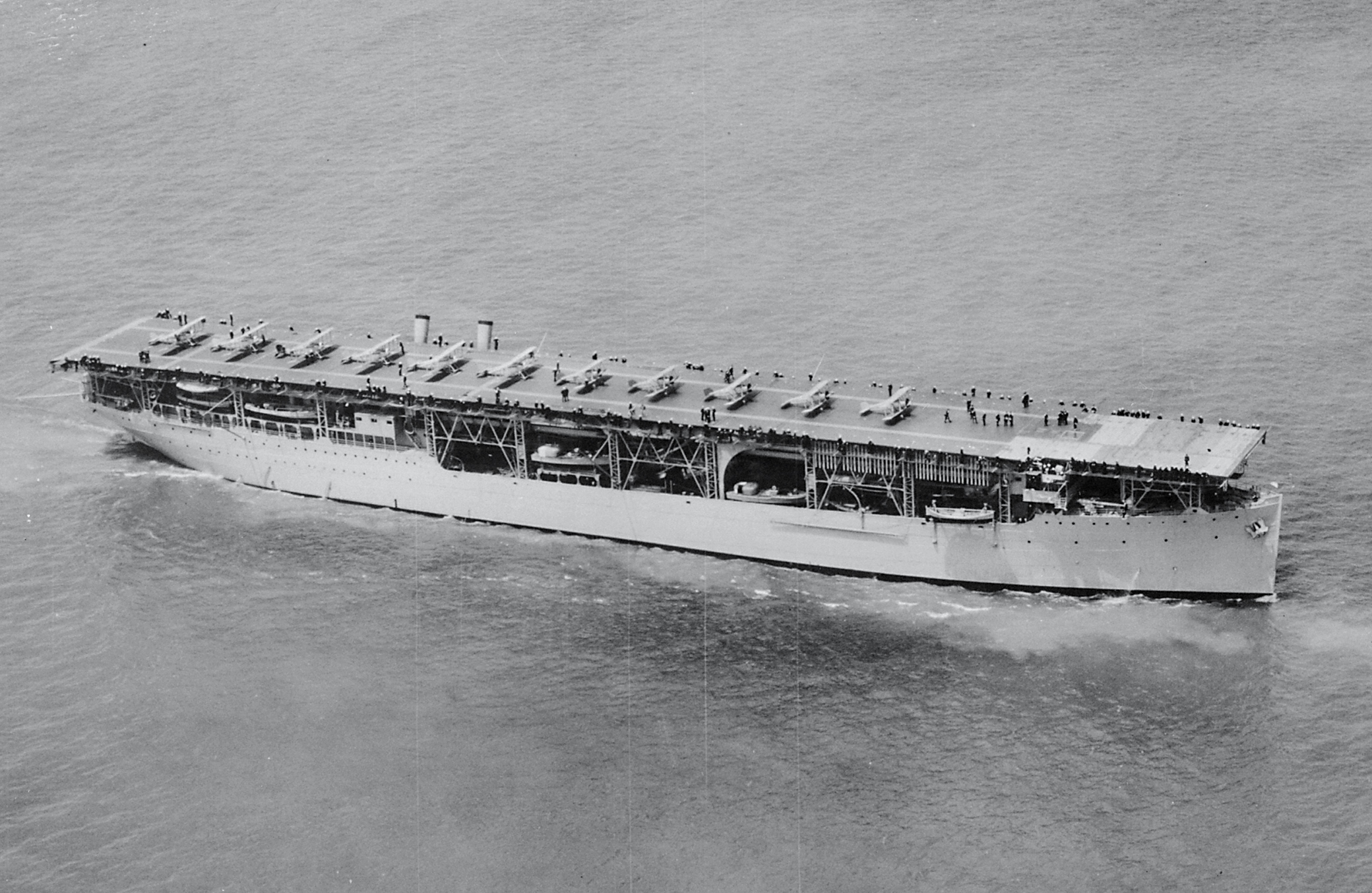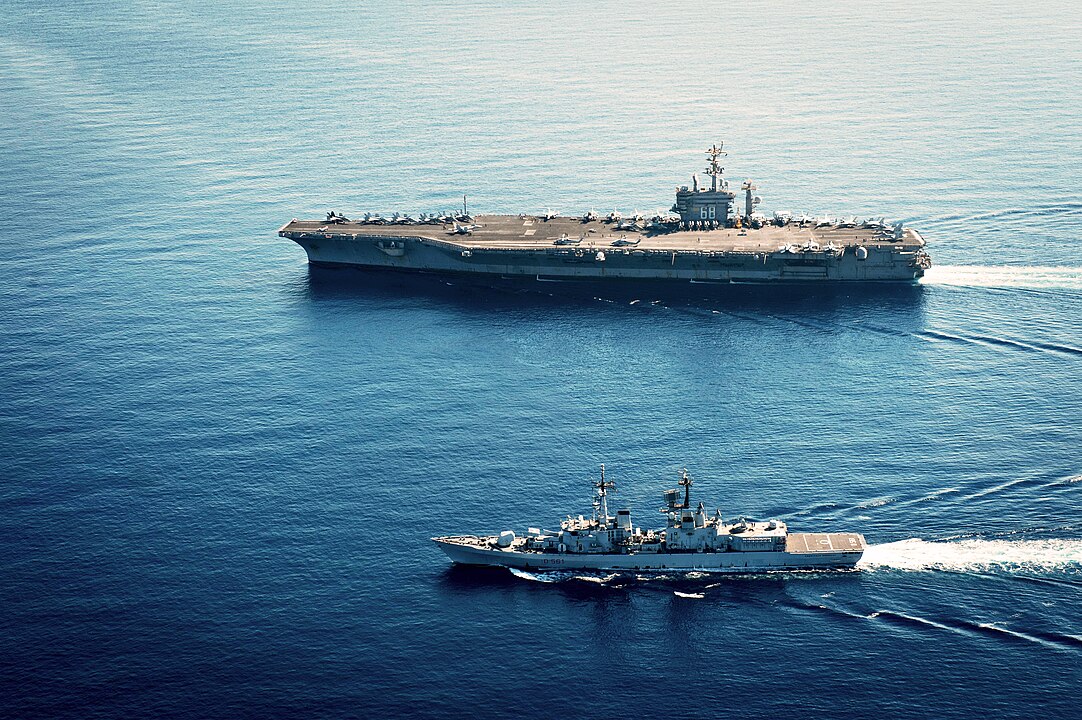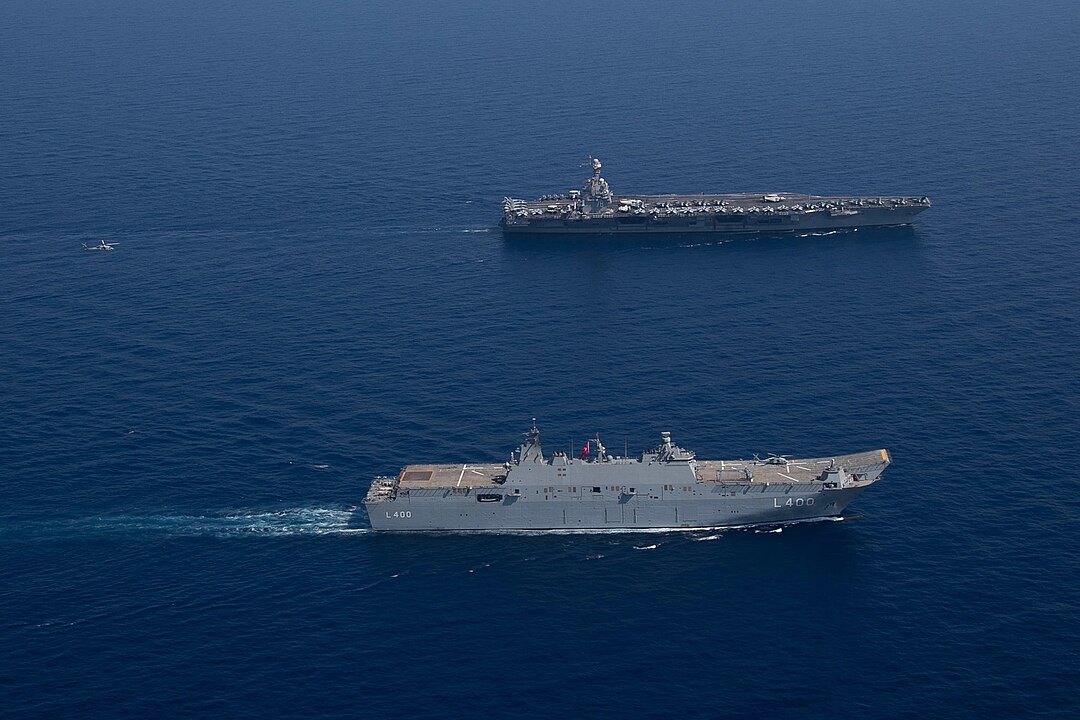
From the USS Langley, the pioneer that commenced America’s foray into carrier aviation, to the technological marvels of the Nimitz and Ford classes, these ships highlight the evolution of sea-based air power.

Converted from the collier USS Jupiter, USS Langley (CV-1) became the U.S. Navy’s first aircraft carrier when she was commissioned in March 1922.

As the first to feature ship-launched aircraft operations, Langley’s legacy cannot be overstated, despite its scuttling in World War II after a Japanese attack.

Another noteworthy vessel, the USS Enterprise (CV-6), known as “The Big E,” gained fame as the most decorated U.S. warship of World War II.

Its exploits across critical battles in the Pacific theater earned it 20 battle stars and the moniker “The Grey Ghost.” The USS Enterprise’s service exemplified the carrier’s role in turning the tide of war.

Post-World War II saw the evolution of the carrier with the USS Midway (CV-41), serving through the Cold War and witnessing modifications like the introduction of an angled flight deck and steam catapults.

Midway’s long tenure of 47 years is a testament to its versatile and enduring design.

Entering the nuclear age, the USS Enterprise (CVN-65) became the first nuclear-powered carrier, revolutionizing naval strategy with its virtually limitless operational range.

Alongside, the introduction of the Nimitz-class carriers, with the USS Nimitz (CVN-68) as the lead ship, showcased the might of U.S. naval power.

These nuclear-powered behemoths, operational since the 1970s, allow for unprecedented global force projection.

As we advance into the 21st century, the U.S. Navy’s technological prowess is encapsulated by the USS Gerald R. Ford (CVN-78), representing the most advanced carrier to date.

With innovations like the electromagnetic launch system and a reduced need for crew through automation, the Ford-class is set to define the future of naval warfare.

These carriers, each with their historical significance and technological milestones, demonstrate the U.S. Navy’s unrelenting pursuit of naval superiority.

As the backbone of American sea power, they project strength across the oceans and symbolize the enduring importance of aircraft carriers in modern warfare.

However, perhaps the most significant difference between the Ford and her predecessors is the increased automation. Through automating various ship systems, the Ford can operate with a smaller crew than past aircraft carriers – saving money in the long term.
Relevant articles:
– Ranked by Expert: The Navy’s 5 Best Aircraft Carriers Ever, The National Interest
– The U.S. Navy’s 5 Best Aircraft Carriers Ever, The National Interest
– 15 Biggest Aircraft Carriers in the World, Yahoo Finance
– Unveiling the 10 Biggest Aircraft Carriers in the World, Naval Technology

